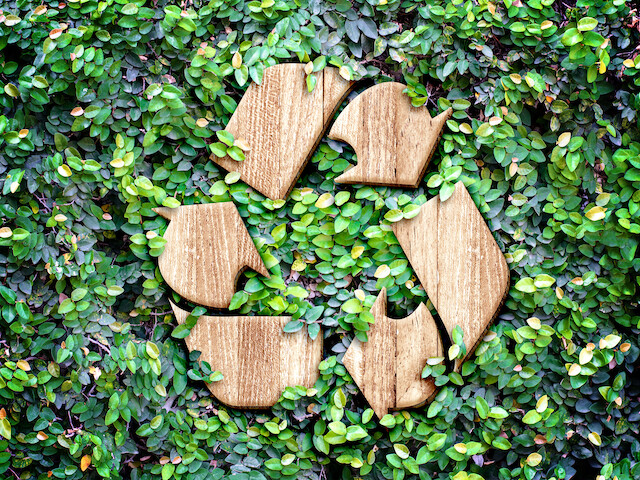Aug 2, 2023 - 3-5 minutes
Get in the Know on PET Plastic Recycling Myths

Learn about the misconceptions surrounding plastic packaging and recycling and how they affect the recycling stream. Find out how brand owners can educate end users to increase recycling efforts and reduce environmental impact.
However, according to the Association of Plastic Recyclers (APR), not everyone in the public understands plastic packaging’s value, and several key misconceptions exist.
Find out specifically what the public’s misconceptions may be and how you can help brand owners educate end users to better understand and increase recycling.
Myth #1: Recycling plastics doesn’t work and will never work.
Many end-users are not aware of how to recycle plastic nor realize that the packaging comes from previously-recycled packaging. Therefore, they may not believe their involvement in recycling plastic can be significant in circular recycling overall.
Truth:
Recycling plastic works! For example, the APR cites in 2021 that the United States recovered 5.1 billion pounds of post-consumer material for recycling. It resulted in 4.7 billion pounds of processed, post-consumer plastic material across North America; 20% of this material included rigid packaging from mainly HDPE, PP and PET. By providing these types of examples to the public, you will enable brand owners to help end-users see how their efforts can contribute to a larger sum of recycling statistics and motivate more people to contribute.
Myth #2: Most of the plastics put in bins do not actually get recycled.
Truth:
While recycling programs vary across the U.S., the vast majority of plastics collected for recycling do get recycled. It is important for brand owners’ packaging to communicate what end-users need to do with the packaging at the end of its life; for example, a brand owner should help an end-user know whether they can recycle package from home curbside of if they should take it to a store drop-off location.
Overall, it is key for end-users to understand that accepted recyclables do get recycled, whereas plastics that end up in trash will never enter the recycling stream for second or third generational use.
Myth #3: Most plastics are exported for recycling.
Truth:
Recycling exports have decreased since 2012, with a notably deep decline in 2017. This is because domestic demand is strong enough to keep these plastics in the U.S. In particular, over 50% of PET bottle bales were exported in 2008 and 2009, whereas only 3.1% of PET was exported overseas in 2021. Label converters and brand owners can work together to provide more details on the exact locations of MRFs in the U.S. to help end-users realize that recycling efforts are happening close to them and not overseas.
Myth #4: It is not beneficial to the environment if plastics enter circular system.
Truth:
Entering PET packaging into the circular system is a form of recycling. Circular recycling enables a PET package to be broken down and reformed into new packaging, enabling numerous generational usage. Rather than creating new plastic material each time PET packaging is needed, forming recycled plastic into new materials reduces energy consumption to decrease carbon emissions, helping improve the environment. Both bottle and tray packaging containers are growing markets for recycled PET packaging, while durable goods markets also provide options to reuse PET materials in mixed colors. While end-users may be aware of “the circular system” terminology, it’s up to label converters and brand owners to clearly identify how PET packaging plays a critical role in enhancing circular recycling; this will help end-users understand that their recycling efforts have an impact in decreasing carbon emissions with keeping current plastic in use rather than making new plastic.
Myth #5: Plastics can cause fires at MRFs.
Truth:
While PET material can burn, it is not the common source of fires in recycling bins or at MRFs. According to the APR, lithium-ion batteries are generally the cause of these fire incidents. Communicating this with end-users can both clarify the common cause of fires at MRFs and make them more aware of keeping lithium-ion batteries out of their recycling bins.
Myth #6: Recycling enables production of new plastics.
Truth:
By recycling more often, plastic that is already developed will continue being reused, which decreases the need to make brand new plastic. This means less plastic will be used overall because there is less virgin plastic being manufactured into new bottles, trays and other PET packaging.
Additionally, MRFs have the capabilities today to recycle more PET material. This means if more end-users contribute PET packaging to the recycling stream, the yield of PET material will increase, allowing more PET packaging to stem from recycled materials rather than new plastic. This will also result in less carbon emissions due to decreased energy usage that’s required for creating new plastic. While reducing plastic use is also important, recycling is the best option for the plastic that is already in use.
How Bostik Can Help You Play a Key Role in Circular Recycling
Are you looking for an adhesive solution that can help bust myths about PET package recycling? Contact a Bostik expert to learn how the right solution can help labels improve circular recycling.
All information contained herein is believed to be accurate as of the date of publication, is provided “as-is” and is subject to change without notice. To review our full U.S. Legal Disclaimer, visit: https://bostik.com/us/en_US/privacy-policy/legal-disclaimer
